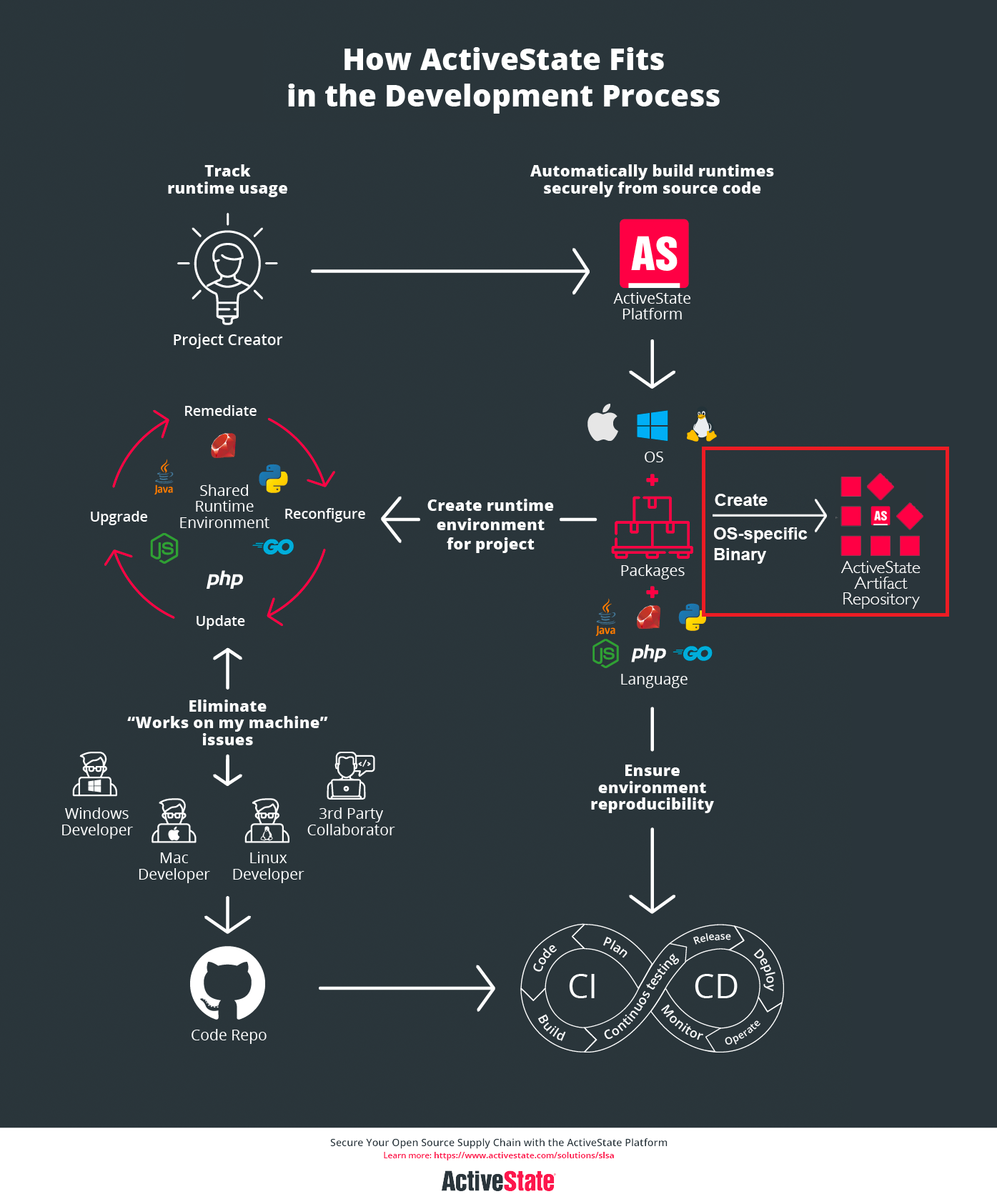The ActiveState Artifact Repository
An ActiveState Artifact Repository (AAR) is a software storage system that acts as a source for the code artifacts required by your software teams and systems. It may contain third-party source code components imported from a public repository, as well as the packages built from those components.
At this time the ActiveState Artifact Repository is only available to Enterprise tier members.
 Important features of your AAR are:
Important features of your AAR are:
- Offering a secure source of packages for your developers that conforms to security and compliance expectations.
- Standardizes development artifacts to eliminate “works on my machine” issues.
- Ensures provenance, in which each built artifact can be fully traced back to its original components.
Creating an AAR
Before you can create and use your AAR, the following conditions must be met:
- AAR capabilities must be enabled for your organization. For more information contact us.
- The existing user environment must be using PIP and Python 3.8 or later.
AARs can only be created from existing projects. Once on your project page in the Platform, creating an AAR can be done via the Project Settings tab.
- Find the prompt to create an ActiveState Artifact Repository and click the link.
- Create a new AAR by clicking the Create ActiveState Artifact Repository button.
You cannot create an AAR for a project that fails to build on at least one platform. For example, if your project targets Windows, macOS, and Linux, and successfully builds on Windows and Linux but fails to build for macOS, an AAR cannot be created.
- A commit ID, as well as a URL where your AAR will be hosted, will be generated. Using the text field shown, attach a tag to your URL in the field provided and click Create.
Your new AAR will appear under the “Existing Servers” section. To install the vetted packages to your project and developer environment copy the pip install command and paste it into your command line.
Editing an AAR
After creating your AAR you can edit its Commit ID and URL tag under the “Existing Servers” section of your ActiveState Artifact Repository page. These edits can be done at any time in your project’s lifespan and updating your AAR’s Commit ID and URL tag will ensure your developers are working with the most up-to-date versions of your project (and its artifacts).
Commit ID
- Clicking Edit and Update will generate a new Commit ID, updating the AAR to the current state of the project at the time of commit.
- Updating your Commit ID will save any changes that have been made to your project (e.g. adding/deleting artifacts to your project) to your AAR.
URL Tag
- Clicking Edit and entering a new URL tag before clicking Update will generate a new URL and PIP install command for your AAR.
- Changing the URL tag can help with controlling versioning aspects of your project, by associating notable developments with a specific URL.
- You can control who has access to your AAR by updating the URL tag, however, each person who has received the old URL will need the new URL to access the revised AAR. Before editing your URL tag ensure you have a method of delivering the new URL tag to those who need it.
Deleting an AAR
- In your Project Settings tab, click ActiveState Artifact Repository and find the AAR you want to delete under the Existing Servers section.
- Click the trash bin icon and in the “Are you sure you want to delete this tag?” prompt click Delete.